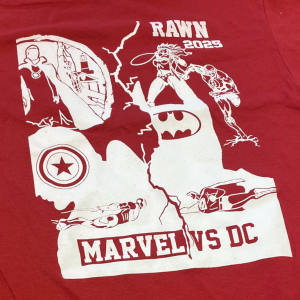Physical education transitions to the virtual world
How P.E teachers overcame the challenges of virtual learning
December 18, 2020
For many student, adapting to virtual learning have been extremely difficult, but for most teachers, the transition to the virtual world has been downright rough. More specifically, ideas for virtual P.E classes have been a challenge many gym teachers have faced.
“Without sounding too dramatic, we really had to change everything that we do in a normal setting,” P.E teacher Brighid Marquess. Marquess is a teacher of regular P.E classes and an alternative gym class called Outdoor Fitness & Adventure.
As explained by Marquess, a day in virtual P.E class starts with a check-in conversation about the previous day’s workout and a question of the day. When it comes to the workout, there is a focus on goal setting and reflection. Workout evidence is recorded through a variety of formats such as google forms, EdPuzzle, Flipgrid and Google slides.
“Generally, I focus on a specific type of workout and allow them some choice within that type,” Marquess said. “For example, on a strength day there might be four different video options focusing on different body areas, utilizing different equipment or no equipment, etc. I usually provide demos and explanations about specific exercises within the workout.”
Most weeks consist of any type of cardio exercise on Monday. Tuesdays are HIIT workouts and Wednesdays consist of flexibility, yoga or meditation. Thursdays are strength days and Fridays are freestyle. In both classes that she teaches, students are encouraged to participate in these activities daily, which are assigned via Google Classroom.
“We emphasize being active for at least 30 minutes a day, based on individual goals and level of fitness,” Marquess said. “In other words, there is less of a focus on sports and more of a focus on personal fitness.”
Gym class is infamously known for playing a bunch of popular sports, so alongside the daily workouts, a Sport of the Week is assigned every Monday where students learn about a specific sport for the week.
The majority of her ideas for these activities came from meeting with colleagues, as well as internet resources.
These activities were designed so students can perform them indoors or outdoors. “I encourage them to get outside frequently for activities,” Marquess said. “I motivate them to workout outside at least 1-2 days a week if they can safely do so and have permission.”
However, one major aspect that cannot be incorporated into lessons are teamwork activities.
“P.E. classes are typically hands on and interactive and we had to adapt the methods and delivery so that it is more geared towards individual workouts,” Marquess said.
Teachers came up with creative ways to implement this by utilizing breakout rooms on Google meets. “It is definitely not the same but we’re making it work,” Marquess said.
In her alternative gym class, Outdoor Fitness & Adventure, teamwork is a key component. The solution to this is, “Students work in the same teams throughout the quarter,” Marquess said. “There are group projects and team challenges. I think the activities are engaging and the students liked working together.”
“I think there are a lot of ways to go about remote P.E. and it’s difficult to know what method is best,” Marquess said. “My thought process is that students need to move, even more so during these circumstances when everyone is sedentary and staring at screens far more than usual.”
She believes that focusing on teaching students to manage their personal fitness levels and getting them to be active is more beneficial than having them sit in a virtual P.E class, learning about topics that they are most likely not paying attention to.
“Overall, with the given circumstances, I would say student participation has been great,” she said. “It’s kind of hard to say with 100% certainty because they technically could ‘fake’ the evidence of their workouts.”
“Figuring this out has definitely been interesting, but I am having fun and enjoying the new ways of doing things.”






